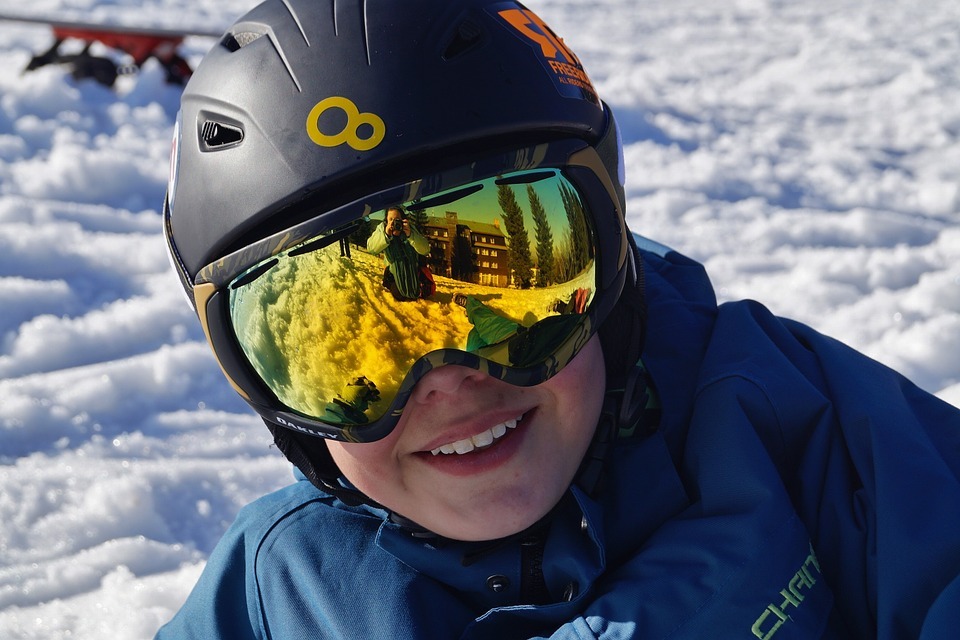Protecting your eyes while skiing is an essential step that you should not forget. Several factors can damage your eyes while you’re skiing, such as sun, cold, snow, glare, and wind. Plus the unexpected circumstances such as falling ice or whipping tree branches can also damage your eyes. That is why we are here to give you some tips that you should consider when looking for sunglasses or goggles that will help protect your eyes while skiing.
Goggles or Sunglasses?
Sunglasses – If you’re going to go out an ski on a sunny to moderately overcast days, then sunglasses are the most comfortable eyewear for you. However, those are not the typical sunglasses you wear at the beach. Sports sunglasses have durable lenses and frames that won’t shatter easily on impact, and they are usually made from plastic, glass, and polycarbonate. Always look for sunglasses that have polarized lenses because it can protect you from harmful ultraviolet rays. This is because polarized lenses are laminated with a filter that allows explicitly vertically-directed light to pass through. Thus, the horizontally angled lights from surfaces such as water are blocked, which nearly eliminates glare.
Other than that, it’s essential to know that glasses with colored lenses can help filter out specific colors that can enhance your vision. For instance, glasses with orange or yellow lenses are ideal for hazy and overcast days because they help filter out blue light in shadows. Glasses with brown, copper or grey lenses work well on sunny days because they help improve visual perception under blue skies. Glasses with amber or red lenses work well with partly cloudy weather. However, if you’re the type of skier who skis of all kinds of conditions, we suggest that you should consider buying a pair of glasses that have interchangeable lenses.
Goggles – Nothing compares to the warmth and vision that goggles can give you if you’re going to ski on cold and snowy days. Goggles can protect your eyes, help you see well, and keep your face warm. Just like sunglasses, goggles come in different sizes and models. The only way you could tell which one is the best for you is if you personally try on a few pairs. Large framed goggles offer most warmth, protection, and it gives you the best peripheral vision. On the other hand, smaller framed goggles are less bulky and light. But always make sure that when you’re using small-framed goggles, you’ll still be able to see 180 degrees from right to left.
Most goggles are made with rubber, nylon, or proportionate that helps retain its shape regardless of the weather conditions. Goggles come in a wide variety of prices, but you always get what you pay for. Good quality goggles usually have two lenses in one, outside and inside the lens. They are like double-panned windows, and they help to insulate you against cold weather and prevent fogging. There are also several models of goggles that come with a small, battery-operated fan that circulates fresh air inside your goggles.
If you are wearing prescription glasses, we suggest that you should look for a pair of goggles that will completely fit over your glasses. And you can also purchase goggles that allow prescription lens inserts. You can ask your optometrist to make you a pair of prescription lens inserts that you can permanently put inside your goggles. Take the time to learn more about prescription ski goggles and then decide if they are right for you.
Always Keep Eye Drops Handy
Whenever you’re around cold winds at a high altitude, chances are your eyes will struggle to retain moisture. That’s why you should always bring some generic eye drops with you to maintain moisture in your eyes and help you see clearly.
Goggles and sport sunglasses are not the most expensive ski gear you buy, but they are certainly one of the most important. That’s why before your next trip, drop by your local ski shop or sports outlet and get yourself a good pair of sport sunglasses or goggles so that you will be more than ready for your next ski trip.

